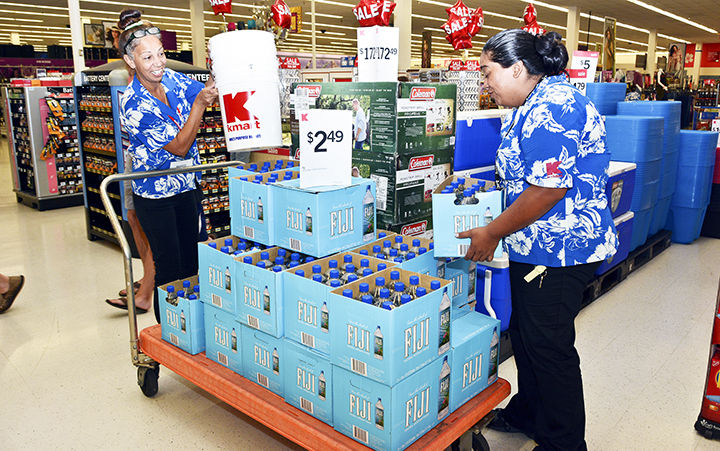LIHUE — The County of Kauai is finalizing a list of potential shelter sites for people looking to bunker down if forced from their homes by hurricanes Iselle and Julio. County spokeswoman Beth Tokioka said the list could be announced today,
LIHUE — The County of Kauai is finalizing a list of potential shelter sites for people looking to bunker down if forced from their homes by hurricanes Iselle and Julio.
County spokeswoman Beth Tokioka said the list could be announced today, but the places would be opened only as needed.
A problem determining which places could be used stems from the fact that Saturday is Primary Election Day, and several of the possible sites will be places where people go to vote.
“Many of those sites are being used as polling places and will not be available for emergency shelters,” Tokioka wrote in an email Wednesday.
There are 18 locations on the island designated as hurricane shelters by the Kauai Civil Defense Agency — 12 of which can provide limited support for those with special health needs and eight that can accommodate pets. Seven of the locations, according to state election maps, are designated as polling locations for Saturday’s primary election.
Crews at the Kauai Island Utility Cooperative, meanwhile, have been “securing loose objects at our facilities, refueled our vehicles and inspected our emergency supplies,” KIUC spokeswoman Shelley Paik said.
“Our crews have also been out checking on our lines and cutting trees and branches that are too close to our lines, in case of high winds,” Paik wrote in an email. “We want to remind everyone to stay safe, and in the event of downed power lines, please don’t get near the lines.”
If a power outage does occur during a storm, Paik said those lines “will remain out until we can check on the problem.”
“We are planning to remain energized and provide power,” Paik wrote.
Residents, she added, should also take precautions by unplugging any unnecessary electrical equipment, especially sensitive equipment such as entertainment centers and computers.
Department of Water spokeswoman Kim Tamaoka said crews are cleaning and disinfecting water buffaloes to prepare them for immediate deployment, along with “testing and preparing generators for key well and tank site areas.”
Access to fresh water following an emergency, she added, will depend on “the extent of damages to waterlines, our wells and the roads.”
“Residents should prepare a hand crank or battery powered radio to make sure they can get information about the water supply,” Tamaoka wrote in an email. “Residents should also sign up for the county’s Connect CTY notification service. These may be the only ways for the public to know about any water advisories and locations of our water buffaloes.”
In the meantime, Tamaoka said residents should start conserving water before a severe storm approaches.
“Fill your bath tubs and any other large containers with water that you may need to use for flushing toilets, washing dishes, etc,” Tamaoka wrote. “Calculate and set aside enough water (one gallon per person, per day) for drinking, food preparation, and basic hygiene. Choose foods that are shelf-stable (non-perishable foods that don’t need cooking or refrigeration) that are easily prepared.”


